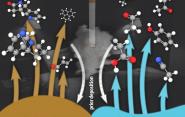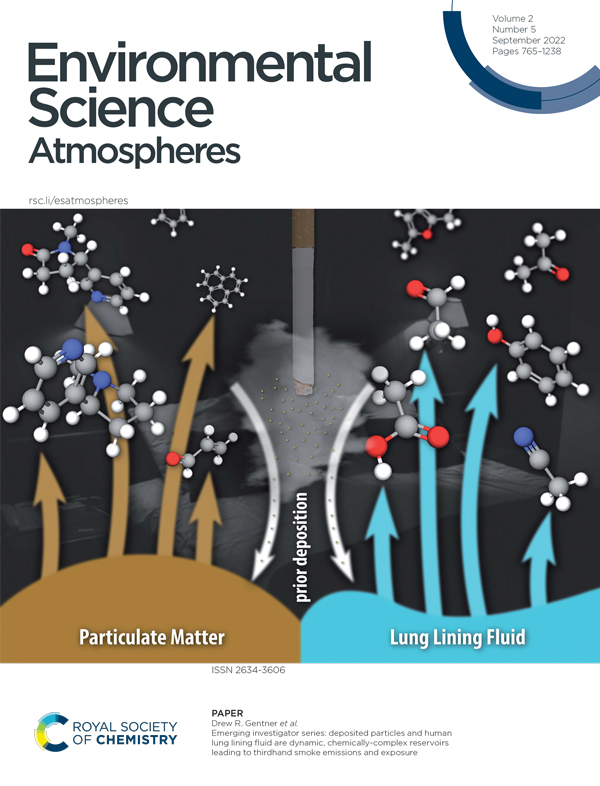A Closer Look at Third-Hand Smoke and Its Risks

Using state-of-the-art techniques, researchers have gained a better understanding of the complex mix of hazardous chemicals in third-hand smoke – the residual contamination from cigarette smoking – which can linger long after smoking has occurred and pose health risks to non-smokers.
 The study, led by the lab of Drew Gentner, associate professor of chemical & environmental engineering, is featured on the cover of Environmental Science: Atmospheres and builds on the lab’s 2020 research in Science Advances examining the off-gassing of third-hand smoke’s chemicals from humans into indoor, non-smoking environments.
The study, led by the lab of Drew Gentner, associate professor of chemical & environmental engineering, is featured on the cover of Environmental Science: Atmospheres and builds on the lab’s 2020 research in Science Advances examining the off-gassing of third-hand smoke’s chemicals from humans into indoor, non-smoking environments.
Off-gassing (the release of chemicals from a material or surface) of third-hand smoke from residual contamination is important due to the health risks it poses. These include exposing non-smokers to high concentrations of a wide range of toxic or carcinogenic compounds derived from tobacco smoke, even over long periods of time after smoking has occurred – with gas concentrations that are sometimes at levels similar to the gases in fresh second-hand smoke.
Using high-resolution mass spectrometry instruments, Yale Ph.D. graduate Dr. Roger Sheu and other researchers from Yale and the Max Planck Institute for Chemistry in Germany studied the third-hand smoke emissions off-gassing from smoke particles that have deposited on surfaces and from human lung fluid that has been exposed to fresh tobacco smoke. These sizable emissions included hazardous air pollutants, such as polycyclic aromatic hydrocarbons (PAHs).
The results show how deposited particulate matter and lung lining fluid can act as vehicles for these pollutants, but their emissions vary in composition and behavior. Once deposited on clothes, furnishings, bodies, or in airways, particulate matter can release a wide range of volatile to semi-volatile gases that are persistent over long lifetimes. They can also spread to other materials and further persist indoors well beyond when smoking occurred. The chemicals in human breath following smoking are prolonged with their build-up in blood, organs, and other tissues.
“The tobacco smoke particles represent a concentrated reservoir of all of these chemicals that will release over time, and the results show that can continue over days - and in many cases much longer - for a wide range of chemicals that are slowly off-gassed,” he said.
For example, this study demonstrates a major transport mechanism for hazardous or reactive compounds like PAHs or nicotine, a prominent reactive component of third-hand smoke, that helps explain prior observations of surface level nicotine across a wide range of environments – even those where smoking has never occurred.
The understanding of third-hand smoke’s health risks has been growing with the understanding of its chemical composition, behavior, and exposure routes, which can occur in places where smoking has occurred or be transported into other non-smoking environments. Employing a detailed set of analytical chemistry tools advances knowledge on third-hand smoke and its risks.
“These methods applied in focused laboratory experiments allowed for the detailed examination of many of the fundamental processes that are driving third-hand smoke emissions with an unprecedented degree of chemical detail,” Gentner said. Yet, the results provide lessons for other types of smoke beyond cigarettes, such as the contamination left by wood smoke intrusion in homes during increasingly prevalent wildfires.
The study appeared in the September 15th issue of Environmental Science: Atmospheres and the other authors are Tori Hass-Mitchell, Akima Ringsdorf, Thomas Berkemeier, Jo Machesky, Achim Edtbauer, Thomas Klüpfel, Alexander Filippi, Benjamin A. Musa Bandowe, Marco Wietzoreck, Petr Kukučka, Haijie Tong, Gerhard Lammel, Ulrich Pöschl, and Jonathan Williams.

